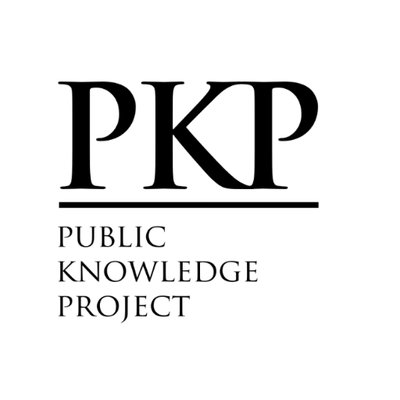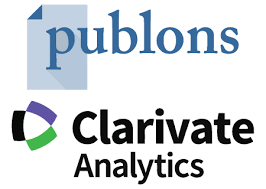Impact of the economic downturn on the default rate of the bank's customers
DOI:
https://doi.org/10.59051/joaf.v9i1.115Abstract
This article analyses the correlation between the evolution of macroeconomic risk factors and the default of the borrowers. For this purpose, we have proceeded to the modelisation of the default rate distribution of a Moroccan bank while we inspired from some studies carried out in USA and Canada.
This paper aims to measure and explain the impact of the adverse economic conditions on the degradation of the credit portfolio quality. This work does not valid any previous study but it consists on the definition of an explanatory framework approach. Indeed, the majority of the current studies mainly focus on the modeling of the systematic risk related to individuals loans but do not take into account the case of hybrid portfolios which include all bank customersDownloads
References
Asquith et al. (1989), « Original Issue High Bonds: Aging Analysis of Defaults, Exchanges and Calls », Journal of Finance, September 1989, p 923-952.
Archambault R. et Laverdière D. (2005), « Un modèle macroéconomique d’analyse et de prévision de l’insolvabilité commerciale et des consommateurs au Canada », Information et analyse économiques, Bureau du surintendant des faillites, Industrie Canada.
Altman E.I. et Saunders (1997), « Credit Risk Measurement: Developments over the last Twenty Years » Journal of Banking and finance 21- 1721-1742.
Altman E.I. (1968), « Financial Ratios, Discriminant Analysis and the Prediction of Corporate Bankruptcy », Journal of Finance, September 1968, p 589-609.
Asarnow E. et Edwards D. (1995), « Measuring loss on Defaulted Bank Loans: A 24 year study », The journal of commercial lending, March 1995, 77(7), p11-23.
Ausubel L.M. (1997), « Credit card default, credit card profits, and bankruptcy, The American Bankruptcy Law Journal », Vol. 71, 249-270.
Chang Soo K. et al (1998), « The Determinants of Corporate Liquidity: Theory and Evidence », Journal of Financial and Quantitative Analysis, 1998, vol. 33, issue 03, pages 335-359.
Dionne et al. (2007), « A Reduced Form Model of Default Spreads with Markov Switching Macroeconomic Factors », Working Paper 07-41.
Duffie D. et Singleton K.J. (2003), Credit Risk: Pricing, Measurement, and Management, Princeton Series in Finance.
Emery K. M. et Cantor R. (2005), « Relative Default Rates on Corporate Loans and Bonds », Journal of Banking & Finance, vol. 29, no 6, p. 1575-1584.
Figlewski et al. (2006), « Modeling the Effect of Macroeconomic Factors on Corporate Default and Credit Rating Transitions», NYU Stern Finance Working Paper No. FIN-06-007.
Jonkhart M.J.L. (1979), « On The Term Structure of Interest Rates and the Risk of Default », Journal of Banking and Finance 3 (1979) 253-262.
Hand D.J.et Henley W.E (1997), « Statistical Classification Methods in Consumer Credit Scoring: A review », Journal of the Royal Statistical Society, Serie A160, p 523-541.
Khemraj T. et Pasha S. (2009), « The determinants of non-performing loans: an econometric case study of Guyana », Presented at the Caribbean Centre for Banking and Finance Bi-annual Conference on Banking and Finance, St. Augustine, Trinidad.
Lee C.J. (1981) « On the pricing of corporate debt: A note », The Journal of Finance (36) p 1187-1189.
Lardic S. et Mignon V. (2002), « économétrie des séries temporelles macroéconomiques et financières », Economica, 2 mai 2002.
Mathilde F. (1989), « Mesure et modélisation du risque systématique d’un portefeuille de crédits aux particuliers », Thèse de Doctorat en Sciences de Gestion, Université, Janvier 2010.
Mulvey J.M. et Zenios S.A. (1994), « Capturing the Correlations of Fixed-income Instruments », Management Science Vol. 40, oct. 1994, 1329-1342.
O’Neil T.O (1998), « A primer on Canadian Bankruptcies », Economic Research Bank of Montreal, February 1998, 8p.
Paquin P. et Weiss M.S. (1998), « Personal Bankruptcies: Study Finds Four Key Determinants », Journal of Retail Banking services, N°20, p19-55.
Phillips P.C.B. et Perron P. (1988), « Testing for Unit Root in Time Series Regressions », Biometrica, 75, 2, p 335-346.
Swartz S. et Anderson L. (1998), « An Empirical Study of Canadians Seeking Personal Bankruptcy Protection », Ottawa, School of Public Administration, Carleton University, January 1998, 108p.
Sullivan A. (1983), « Economic Factors Associated with Personal Bankruptcy », Credit Research Centre, Purdue University, 1983, 20p.
Simons D. et Rolwes F. (2009), « Macroeconomic Default Modeling and Stress Testing », International Journal of Central Banking, vol. 5, no 3, p. 177-204.
Yeager F.C. (1974), « Personal Bankruptcy and Economic stability », Southern Economic Journal, Vol.41, n°1, July 1974, p96-102.
Van Greuning H. et Brajovic Bratanovic S. (2004), Analyse et gestion du risque bancaire, Eska, Banque Mondiale.
Downloads
Published
How to Cite
Issue
Section
License
Copyright (c) 2018 Anas YASSINE, Abdelmajid IBENRISSOUL

This work is licensed under a Creative Commons Attribution-NonCommercial-NoDerivatives 4.0 International License.
Authors who publish with this journal agree to the following terms:
- Authors retain copyright and grant the journal right of first publication with the work simultaneously licensed under a Creative Commons Attribution License that allows others to share the work with an acknowledgement of the work's authorship and initial publication in this journal.
- Authors are able to enter into separate, additional contractual arrangements for the non-exclusive distribution of the journal's published version of the work (e.g., post it to an institutional repository or publish it in a book), with an acknowledgement of its initial publication in this journal.
- Authors are permitted and encouraged to post their work online (e.g., in institutional repositories or on their website) prior to and during the submission process, as it can lead to productive exchanges, as well as earlier and greater citation of published work (See The Effect of Open Access).


















